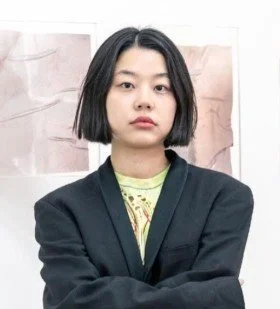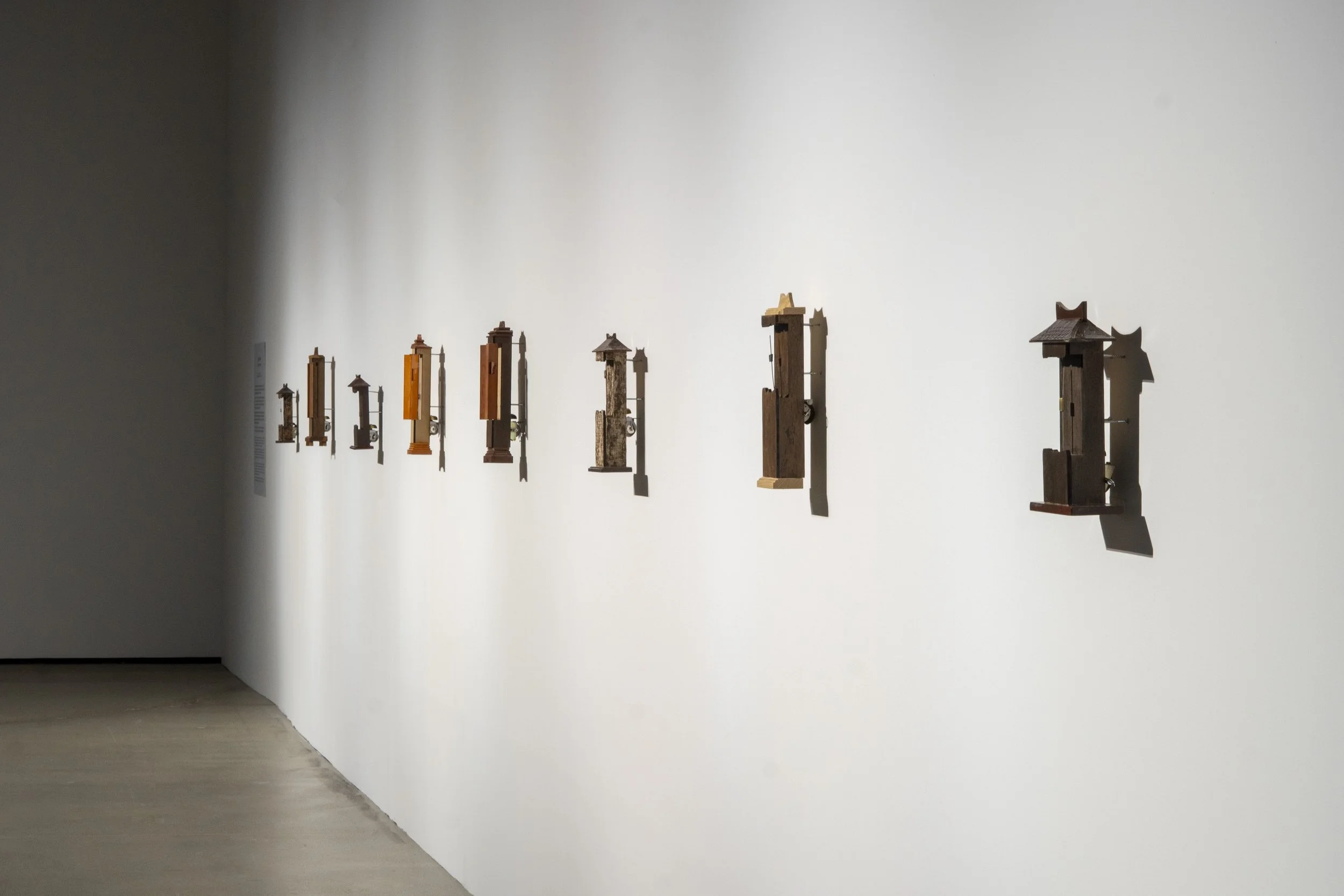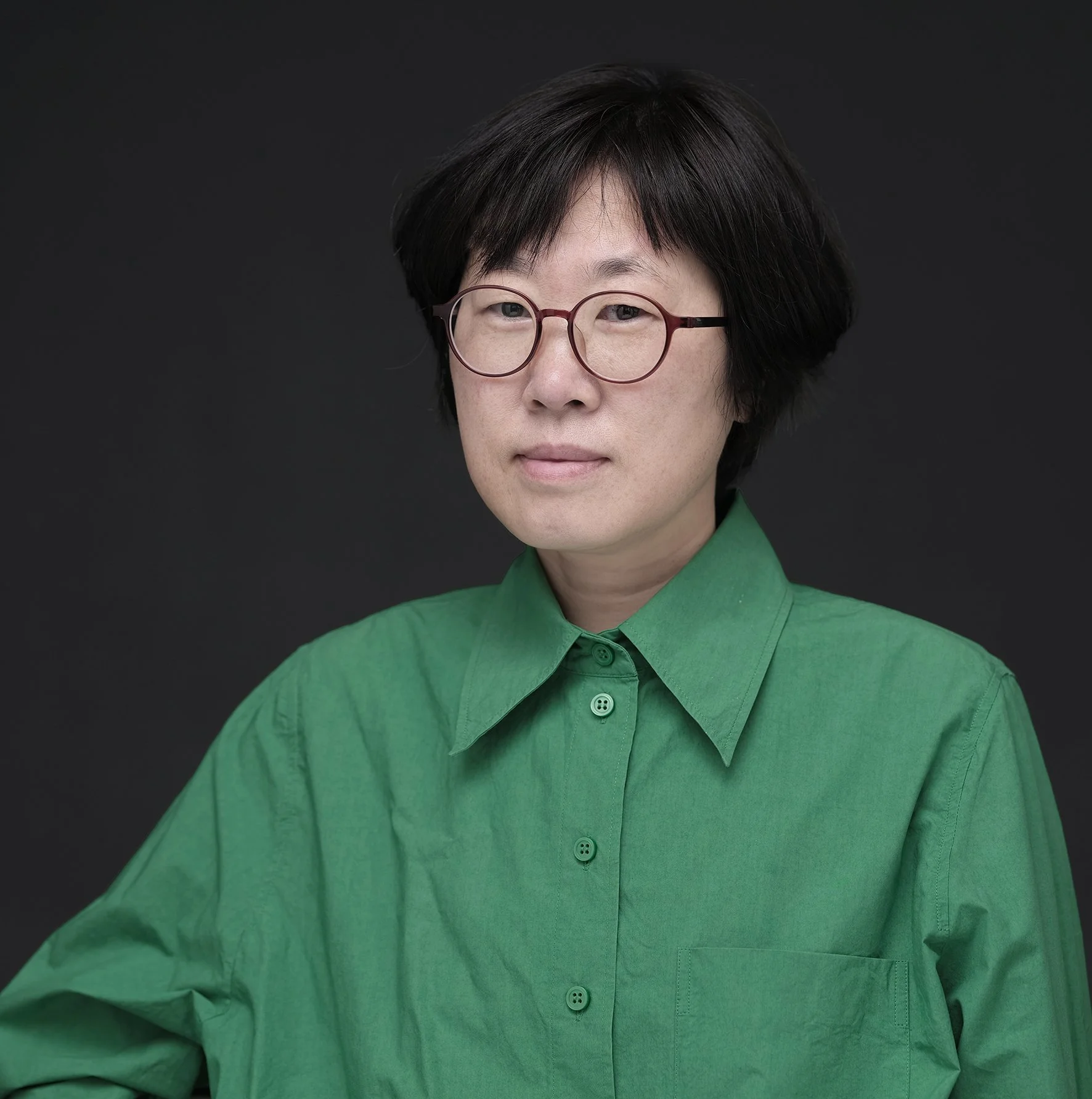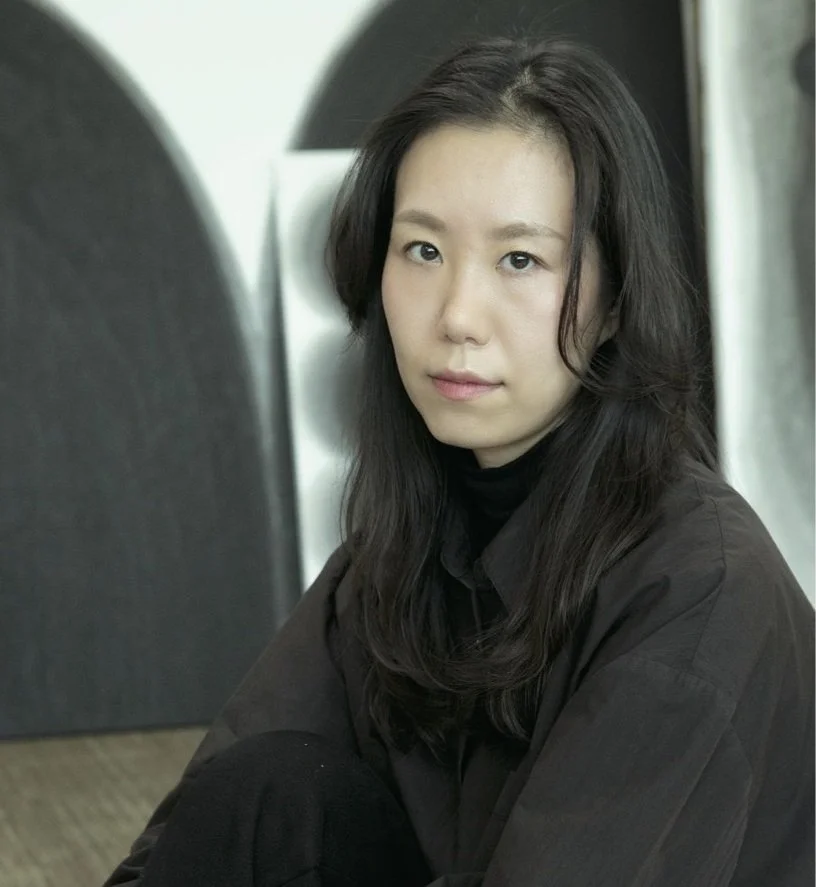New York New Ink!
On view: December 10, 2025 - January 30, 2026
Tuesday - Friday: 10 AM - 6 PM / Saturday: 11 AM - 5 PM
It is closed on Sunday and Monday.
Venue: Korean Cultural Center New York
122 E 32nd Street, New York, NY, 10016 (1st & 2nd Floors)
New York New Ink! exhibition — a continuation and expansion of the Jeonnam International Sumuk Biennale— invites reflection from its title alone. Here, “ink” does not signify tattoo ink, but rather the sumuk ink that embodies a profound artistic and philosophical lineage — the very root of Korean and broader East Asian culture.
Revisiting the history and artistic significance of sumukhwa (ink painting) is an act of rightful reclamation. Presented in New York — the epicenter of contemporary art — this exhibition seeks to reinsert the spirituality and visual language of East Asian aesthetics into an art history long shaped by Western-centric narratives.
The Jeonnam International Sumuk Biennale the only biennale in the world dedicated to exploring East Asian identity through the contemporary language of Sumuk (ink painting)
Through its collaboration with the Korean Cultural Center New York, New York New Ink! becomes a site of convergence — where East and West, memory and modernity, philosophy and form meet. Rooted in Jeollanam-do, a region marked by the struggles and ideals of Korea’s democratization movement, the exhibition transforms historical scars into aesthetic and spiritual resonance — revealing how ink, as both matter and metaphor, continues to breathe the ethics and vitality of life itself.
Eight artists Han Young Sup, Jeong Gwanghee, Kang Un, Kay Yoon, Kim Sang Yeon, Koo Seoungyoun, Lee Lee Nam, and Sul Park will engage with Sumuk as a conceptual and material practice that resonates with questions of memory, place, temporality, and transformation. By bridging past and present, local and global, it aims to shape a new aesthetic discourse grounded in the cultural sensibilities of East Asia while speaking to the urgencies of the contemporary world.
Han Young Sup
Han Young Sup is a Korean artist whose practice engages the phenomenology of nature through humble, materially sensitive processes. Often described as a pioneer of Korean hanji art and takbon techniques, Han captures traces of grasses, leaves, and stones—transfers that function as both image and index, revealing the quiet imprints of time and landscape. His work traverses the boundary between abstraction and record, emphasizing what he calls “indefinite natural phenomena.”
Sea (2017)
Over the past decades, Han’s practice has evolved across both two- and three-dimensional forms, using boiled acorns, soils, and dyed papers to evoke the ephemeral conditions of light and weathering. His recent exhibitions include Only the Young: Experimental Art in Korea, 1960s–1970s (Solomon R. Guggenheim Museum, New York, 2023–2024), Infinite Relation (Duson Gallery, Seoul, 2025), Highlights of Korean Abstract Art (Daegu Arts Center, 2025), and A Pioneer of Korean Hanji Art & Takbon for 50 Years (Olyaa Gallery, New Jersey, 2024). His works have been exhibited internationally at institutions such as the Jeonnam International Ink Art Sumuk Biennale (2025) and the Miami Art Fair (2024).
Han’s works are held in numerous public collections, including the National Museum of Modern and Contemporary Art, Leeum Museum of Art, Seoul Museum of Art, Posco Art Museum, and Gyeonggi Museum of Modern Art in Korea. Other major institutions abroad such as the Museum Rade (Germany), Fukui Fine Arts Museum and Osaka Cultural Foundation (Japan), and the San Antonio Museum of Art (USA) hold his works.
Jeong GwangHee
Jeong GwangHee majored in calligraphy during his undergraduate studies and later pursued Korean painting in graduate school. Building on the brush and ink techniques of calligraphy, he has explored a wide spectrum of ink experiments—from traditional painting to performance and installation.
Where Will I Spread? (2021)
He has held solo exhibitions such as Accumulating Ink (Gwangju Museum of Art, Gwangju, Korea) and Where Will I Spread? (Platform, Munich, Germany), and participated in numerous group exhibitions including Ink Dreams (LACMA, Los Angeles, USA), Black & Black (Jeonnam Museum of Art, Gwangyang, Korea), Crisscrossing East and West: The Remaking of Ink Art in Contemporary East Asia (MOCA Yinchuan, Yinchuan, China), Experience of Ink: Transcending Spot and Region (Himalaya Museum of Art, Shanghai, China), and One Breath – Infinite Vision: Korean Ink Art (Ink Studio, Beijing / Korean Cultural Center, New York).
He has also participated several times in Art Basel Hong Kong (Hong Kong Convention and Exhibition Centre, Hong Kong) and in the Jeonnam International SUMUK Biennale. His works are included in the collections of LACMA (USA), Foundation INK (Geneva, Switzerland), The Take a Step Back Collection (Hong Kong SAR), among others.
Connecting the philosophy of Eastern Zen thought with the practice of ink, Jeong’s work persistently questions the relationship between ink and society, ink and humanity, seeking to embody the spirit of contemporary ink in the present moment.
Kang Un
Kang Un graduated from the College of Fine Arts at Chonnam National University and currently lives and works in Gwangju, Korea.
His practice explores the transformation of nature and inner emotion through the language of color and layer, combining the spirituality of ink with the sensibility of color to “give form to the invisible.”
Air and Dream (2017)
Major exhibitions include Journey from Clouds to the Mind: The 1st Hoban Artist Awards (War Memorial of Korea, Seoul, 2023), From Looking up to the Sky to Looking into My Mind (Jeonnam Museum of Art, Gwangyang, 2022), Between the Seeing and the Spoken (13th Gwangju Biennale Special Exhibition, 2021), One Inspiration (Palace on the Isle, Warsaw, 2020), DMZ (Culture Station Seoul 284, 2019), Korean Beauty – Two Kinds of Nature (MMCA Seoul, 2014), Round Table: The 9th Gwangju Biennale (2012), Expanded Paintings: The 4th Prague Biennale (2009), Elegance of Silence (Mori Art Museum, Tokyo, 2005), and Man + Space: The 3rd Gwangju Biennale (2000). He received the 1st Hoban Art Prize, and his works are held in major museum collections including the National Museum of Modern and Contemporary Art (MMCA), Mori Art Museum, and Seoul Museum of Art.
Kay Yoon
Tik Tok (2025)
Kay Yoon is a multidisciplinary artist based between Germany and Korea. Her practice navigates spectral zones between cultural memory, technological mediation and embodied ritual. Drawing from Korean folk traditions and inherited structures of Western modernity, Yoon investigates how cultural rituals, family histories, and ideological systems persist, transform, and mutate across temporal and geographical boundaries. Working across sound installations, performance, poetry, and spatial interventions, Yoon creates immersive environments that channel fragments of past and future through a critically nostalgic lens. Her practice interrogates how technology mediates spiritual and ceremonial experiences, uncovering new forms of ritual emerging from contemporary landscapes and questioning linear concepts of time and memory.
Kim Sangyeon
Kim Sang Yeon is a Korean contemporary artist known for his distinctive visual language that fuses traditional Eastern printmaking techniques with modern art. He earned a Bachelor of Fine Arts in Western Painting from Chonnam National University (1986–1992) and a Master of Arts in Printmaking from the China National Academy of Fine Arts in Hangzhou (1996–1999).
After years of research into the traditional East Asian technique of water printing, Kim integrated this method into contemporary art forms—painting, printmaking, installation, and artist books—to explore the relationships between human and human, human and nature, and human and modern material civilization. His work is a visual contemplation of the tension between the rational order of science and the psychological chaos that resists it.
Working primarily in black and white, Kim draws upon the spiritual essence of Eastern printmaking to shape poetic reflections on existence. The colors that permeate his compositions are not mere decoration but fragments of light and emotion—symbols of rebirth emerging from darkness, and of the coexistence of destruction and creation.
Kim Jeonghee’s The Non-Dual Zen Orchid (1999)
Over the past 30 years, Kim has held solo exhibitions across the globe, including in Seoul, Berlin, Beijing, Paris, Tokyo, Nagoya, Rouen, and Jeju. His works have been featured in major international exhibitions such as the Macao Biennale (2024), China Triennale (2022), Gwangju Biennale (2006, 2021), and in venues including the UNESCO Headquarters in Paris, Austin Public Library (USA), and Zhejiang Art Museum (China).
He has participated in artist residencies at Gwangju Museum of Art’s Palgakjeong Studio (1999–2001), Beijing Creation Center (2012), and YAC International Printmaking Institute in Tianjin, China (2024). His honors include the Gwangju Shinsegae Art Prize (2002), Ha Jung-woong Young Artist Award (2003), O Ji-ho Art Award – Special Prize (2008), and the Young Artist of the Year Award from the Seoul Arts Center (2005).
Kim is also the author of Torn Notebook (2008) and Designing Life (2015). Through light, print, and color, he quietly explores the boundaries of human existence and the recovery of the human spirit amid modern civilization. With his recent works— water Printmaking, a medium that measures both reason and emotion—he seeks to print a new vision of the future.
Koo Seong Youn
Koo Seong Youn is a full-time artist based in Seoul.
Trained in Indian philosophy and photography, Koo Seongyoun has long challenged the viewer’s perception by transforming everyday objects into unfamiliar, symbolic forms. Since the early 2000s, she has combined disparate materials or employed ephemeral substances to create objects that reflect human desire, recording these meticulously constructed pieces through photography. Her process involves the careful collection, disassembly, and handcrafting of materials to produce hyperreal images that both deceive and intrigue.
Eight-panel folding screen of orchids (2024)
Koo’s early works explored ephemerality and disappearance, but her practice has since expanded toward a deeper inquiry into the essence of persistent matter. Her Orchid and Mountain-scape series exemplify this trajectory. In Orchid, she transforms plastic—a material of convenience but also environmental concern—into the symbolic flower of purity, while Landscape renders extreme close-ups of rocks into seemingly vast mountainscapes, reconfiguring the relationship between object and nature.
Lee Lee-Nam
Lee Lee Nam graduated from Chosun University in Korea with an undergraduate degree in sculpture and a doctorate degree in Fine Arts. He also completed a PhD program in Media Art at the Graduate School of Communication and Arts of Yonsei University. In his digital reinterpretation of classical masterpieces that reveal nature’s wonders and life’s aura, he attempts to breathe new meaning and vitality into each pixel of image. It also seeks to communicate with the public in a close manner with his stories in the works, and to communicate various messages such as life value and happiness. With more than eight hundred exhibitions, both solo and group in countries like Belgium, China, Qatar, New York, Singapore and Paris under his belt, Lee continues to expand his horizons globally.
At the 2016 Busan Biennale, he was the first Korean artist to present a virtual reality artwork using Google’s Tilth Brush technology, and he was invited 2016 Venis Biennale exhibition 2018, Lee was put on exhibit at the Inter-Korean Summit folding screen and Gwangju Biennale opening ceremony of the Directing. And in the recently 2019 he had an exhibition at Tate Modern among others and his works are included in the collections of Incheon International Airport, National Library of Korea, United Nations headquarters in New York, and numerous prominent museums such as the Asian Art Museum of San Francisco, the Suning Art Museum and the Zebrastraat Museum in Belgium.
The works of Lee Lee Nam expanded by embracing a wide range of subjects, including "Five-minute aesthetics" with the Lively Spirit, "Rise of the Roots" which explored the source of one's creation from its roots, and "The Breath of Life" that pursued the oriental spirit.
Sul Park
Sul Park reinterprets the tradition of ink landscape painting through pared-down compositional structures, tonal gradation, and the use of mixed media on traditional papers. Her works evoke both the material depth of hanji and the psychological landscapes of perception and memory, translating inner sensibility into modulated layers of ink, graphite, and mineral pigment.
In 2025, Park presented her solo exhibition Shapes of Nature at Art District_P (Busan) following its earlier iteration at super+CENTERCOURT (Munich, 2023). Previous solo exhibitions include A Bigger Landscape (Gallery Another Level, Seoul, 2022; OVID Gallery, Busan, 2021), Imperfection of Scenery (Horanggasinamu Artpolygon, Gwangju, 2020), and A Certain Landscape (SongEun ArtCube, Seoul, 2013).
Form of Nature (2025)
Her recent group exhibitions include Black&Black (Jeonnam Museum of Art, Gwangyang, 2025), NOWHERE (Daegu Art Factory, 2025), Show #6 (Culterim Gallery, Berlin, 2024), and Jeonnam International Sumuk Biennale (Mokpo, 2023). Earlier participations include the Gwangju Biennale: The Eighth Climate (What Does Art Do?) (2016), Hanguk-hwa Mindful Landscape (Daejeon Museum of Art, 2019), and Aesthetics of Ink Painting (Hanwon Museum of Art, Seoul, 2016). Park has undertaken several international residencies including Culterim Residency (Berlin, 2024), Villa Waldberta (Munich, 2023), and Longega Project (Italy, 2022). Her cross-cultural engagements have informed a language of quiet abstraction—one that meditates on the distance between nature and the self, presence and recollection.















